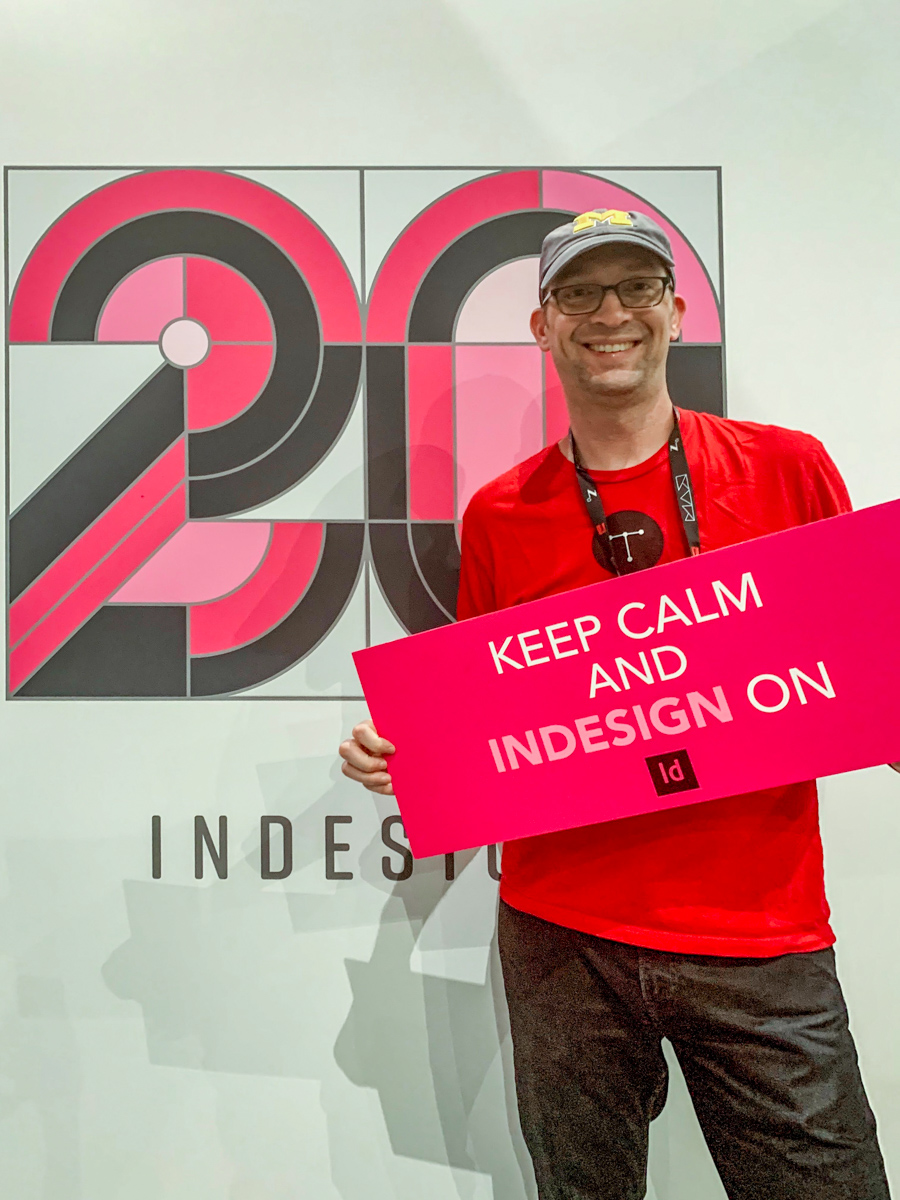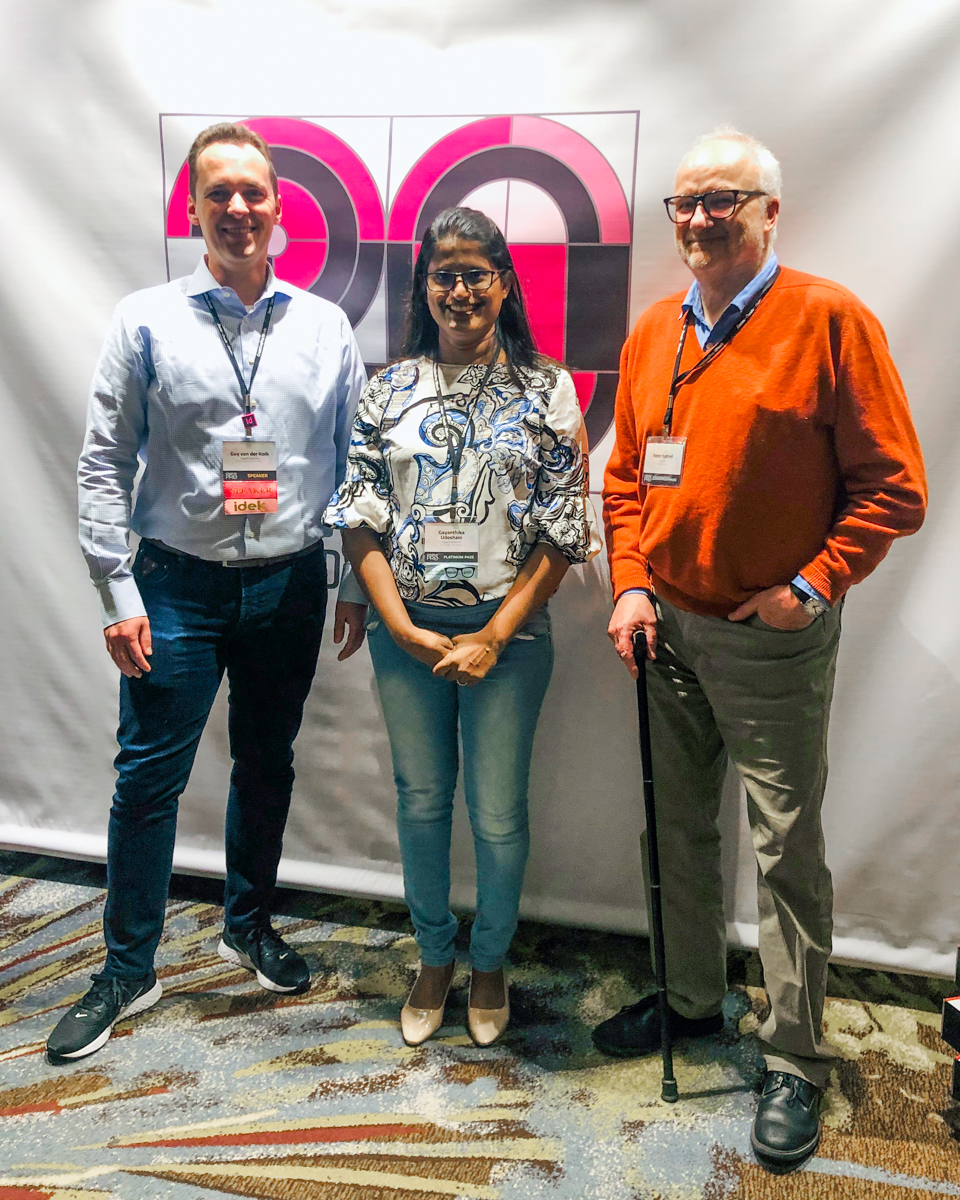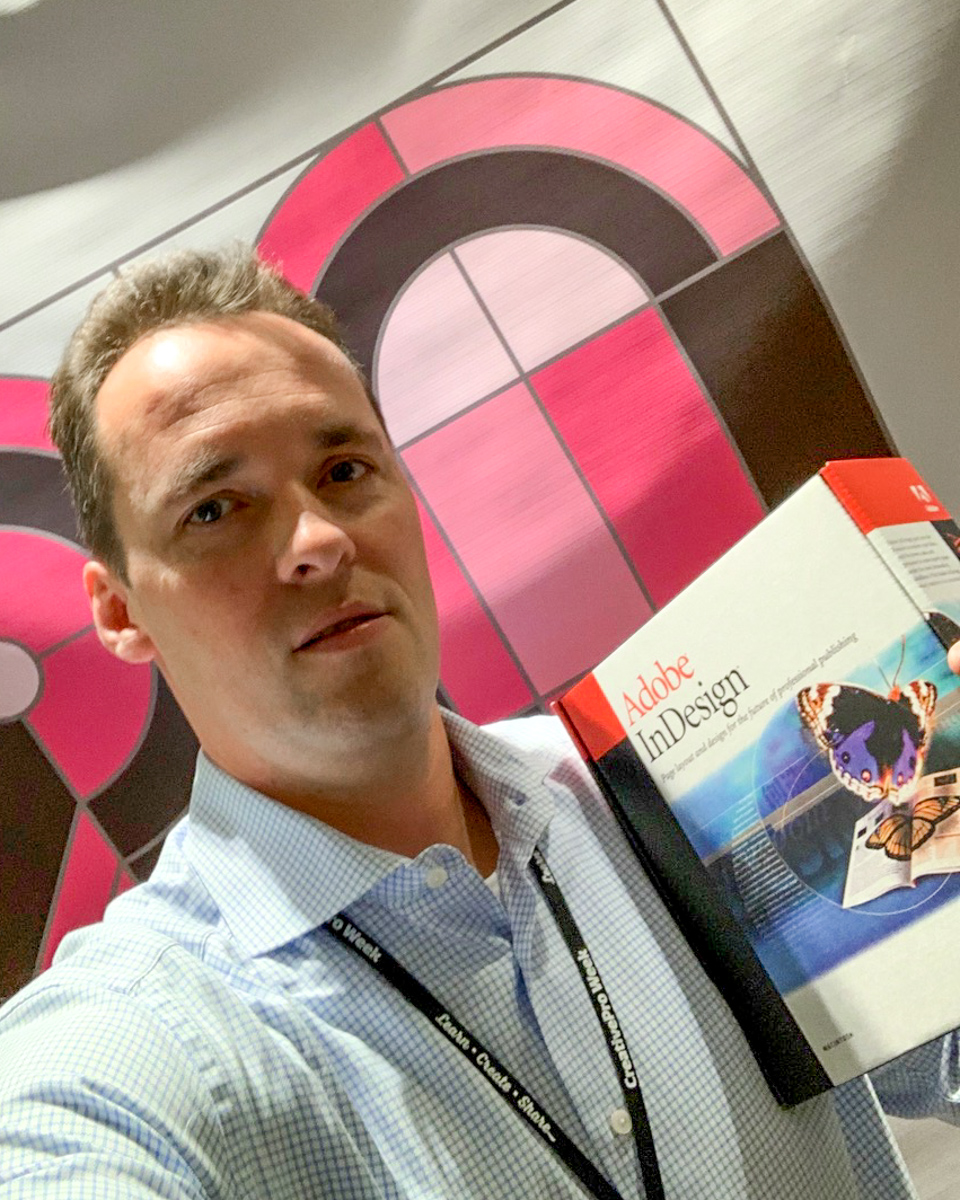10 Typefi team members lay out their InDesign memories and tips.
1999 was a big year. President Clinton was acquitted, The Matrix premiered in cinemas across the globe, Napster pioneered peer-to-peer file sharing, and the Y2K bug was still capturing the public zeitgeist.
Perhaps most significantly for us here at Typefi, and for many people working in publishing around the world, the first version of Adobe InDesign was released in August of that year.
Called InDesign 1.0, the 1999 version was created as a replacement for Adobe’s retiring desktop software, Adobe PageMaker, which was struggling to compete with QuarkXPress, the leading desktop publishing software at the time.
The release of the OS X compatible InDesign 2.0 in 2002 made it the first desktop publishing software in the space, helping cinch its position as an industry standard amongst Apple users in the creative industries.
Since then it has only grown. In 2003 InDesign 3.0 was bundled into the Adobe Creative Suite package, and in 2013 it joined Adobe’s other applications in the launch of Creative Cloud.
Typefi was founded in 2001, with InDesign forming an integral part of the automated page layout software from the beginning.
Ben Hauser, VP Engineering, was hired as an engineer in 2003 to build the first two commercial versions of Typefi—one based on InDesign, and one based on QuarkXPress.
“We built the InDesign version first, and that’s the one we released in 2004,” Ben said. “We never made it to the QuarkXPress version.”
From magazines to menus, online and off, InDesign opens up a world of possibilities for those who need publishing software. So, in honour of InDesign’s 20th birthday, we asked some of our team to share their memories of InDesign, and their top tips and tricks.
Caleb Clauset, VP Product, USA
In 1999, I was still firmly in the QuarkXPress camp. It wasn’t until 2003, when Adobe bundled InDesign, Illustrator, and Acrobat into their “Creative Suite”, that I took a look.
That bundle was a masterstroke, because customers like me, purchasing the suite for Photoshop and Illustrator, got InDesign for free. Adobe’s aggressive pricing for students also helped create a wave of young designers that skipped over QuarkXPress entirely.
By early 2004, I was working with organisations in the Washington, DC Metro Area to convert from legacy QuarkXPress workflows to modern Adobe InDesign solutions.
Through this I met Noha Edell, a spitfire of a Business Development Manager at Adobe. Together with Ken Chaletsky (Copy General), and Mike and Urszula Witherell (JetSet Communications), we launched the DC-area InDesign User Group (IDUG).
This serendipitously led to me joining Typefi shortly after their demo at an IDUG meetup in January 2005. Typefi was showcasing their Typefi Publishing System v2.5 solution, a scriptless automated publishing solution built on top of InDesign CS (v3.0; predating InDesign Server, which didn’t ship until later that year).
While TPS v2.5 was pretty amazing, as a designer and InDesign trainer, I was more impressed with their “Typefi SmartSize” plugin (later renamed “Typefi AutoFit“) that enabled persistent text frame fitting for InDesign 2 and later.
It wasn’t until InDesign CS6 (v8.0; c. 2012) that Adobe copied auto-sizing, but we continue to give away Typefi AutoFit because it gives you the constraints that Adobe forgot—maximum height and maximum width—so your auto-sizing text frames don’t get lost off the page. It also adds responsive parent-child relationships between objects, so resizing or moving the parent effortlessly and automatically resizes or moves the child.
While most InDesign User Groups have faded over time, the community of InDesign users and developers that were fostered by the IDUGs remains incredibly strong and diverse—from David Blatner’s Creative Pro Network/InDesignSecrets.com (now up to episode 271 on their eponymous podcast, and 127 issues of the InDesign Magazine), to the InDesign Talk Google Group and the adobedevs Slack, to the 15,000 creative professionals that attended the Adobe MAX Creativity Conference in November.
Since I joined Typefi in May 2005, I’ve been able to travel the world over teaching and enabling designers to DO MORE with Adobe InDesign. It’s been an amazing ride and I’m looking forward to the next 20 years!
Ben Hauser, VP Engineering, Australia
I first used InDesign in 2003 when I was hired by Typefi. I’m pretty sure I had to write an InDesign script on day one: to automatically place thumb tabs in a travel guide.
I went from knowing nothing to a working script in 1.5 hours. I was impressed at how easy InDesign scripting was to pick up.
I use InDesign almost exclusively via the Scripting API. We write automated solutions for our customers to eliminate their manual, repetitive work.
There are two things I like the most about InDesign:
- For me, the Paragraph Composer is the beating heart at the centre of InDesign. I know a bit about the algorithms going on under the hood and I’m constantly impressed with its performance and results.
- The Scripting API. It’s massive and comprehensive. It’s enabled us (Typefi) to do what we do: automate the heck out of publishing workflows.
My tip for all new engineers who are starting out on their InDesign scripting journey is to work backwards. If you mutate a collection while iterating forwards, bad things happen. Enough said.
Peter Kahrel, Scripting Engineer, UK
I bought InDesign in 1999 (then unnumbered, now referred to as 1.0). It was ridiculously cheap at £60. It looked great, but it was pretty much useless for various reasons. But I loved especially the Paragraph Composer; that has always been a thing of great beauty.
I could see that InDesign was going to be great and used every upgrade that was released. The first upgrade, 1.5, was a big improvement. Most of the disasters had been removed, and I started using it in earnest.
I love InDesign’s precision, its easy extensibility with scripts, and the fact that the keyboard can be configured with shortcut keys which drive InDesign’s interface and, importantly, can be set to run scripts. InDesign is a very keyboard-friendly program. GREP is a fantastic feature too.
I use InDesign for everything that needs typing, even what you’re reading now. I also use it sometimes as a program editor when I need something done that other people would use XSL Transforms for. I don’t do much typesetting any longer, but I keep my fingers supple with a small handful of publications that I update from time to time.
My favourite InDesign tips and tricks are:
- To return to the last-used input field of a panel, press Ctrl+`
- To keep an input field highlighted, press Shift+Enter, not Enter or Tab. That way you can enter new values straight away.
Vlad Vladila, Scripting Engineer, Romania
My first experience with InDesign was not a pleasant one. It was a summer in 2003 or 2004 and I was working as a typesetter for a local newspaper chain. The company was going through a complete overhaul: computer-to-plate, high-quality stock, brand-new PCs, layouts created by a real and properly trained designer, and so on.
We quickly ran into a problem: QuarkXpress, at the time still the king of the DTP software, could not handle Unicode, and the fonts we were using previously (hand-modified to include the Romanian accented characters instead of less common ones like “@” or “#”) looked horrible.
After a lot of back and forward, the decision was reached to give this relatively new software called InDesign a try.
Everyone in the DTP department hated it. We were so used to our beloved QuarkXpress 4, we just could not wrap our heads around the different ways of working with InDesign. (And no, we did not get any kind of training. We were basically told, “Here is the new software, figure it out and make the newspaper.”)
After about a week or so, out of eight or nine typesetters in the department, all that remained were me and the department head; everyone else had quit. Most of them were veterans that had started out working on the Linotype machines and barely managed to make the transition to digital typesetting.
I lasted there for about six more months, then got an offer from a smaller newspaper. One of the first questions I was asked was what software I would be using, and their response was: “For now it’s Quark, but you can change it if you want.”
I did one more edition using Quark and finally had to admit: InDesign was faster, easier and more efficient. I never went back. (I did have a brief affair with PageMaker, which got me into scripting, but that’s a different story.)
It’s hard to say what I love most about InDesign. It has been a daily part of my life for 16 years now. I’ve used it for anything I could, from shopping lists to making the invitations for my wedding, so I guess the answer would be: “I love most things about InDesign, except the parts that really suck!”
Nowadays I mostly interact with it via code, but from time to time I still enjoy typesetting a book for my own use.
My favourite InDesign tips and tricks are:
- Hit Ctrl (Cmd)+Enter. It’s the only shortcut you will ever need.
- Use a positive Left Indent and an equal but negative First Line Indent to create great lists and TOCs.
Emily Johnston, Business Development Director, USA
Prior to joining Typefi, I managed the prepress division of a publishing services company. InDesign was one of the composition software applications we used, but I only ever had a general awareness of it and understanding of how it worked. I never actually used it myself; my role was more on the project management and customer service side of things.
Today, of course, my use of InDesign is through Typefi for automatically producing sales proposals. However, I still author in Word using Typefi Writer, and have never had to go into InDesign to make changes. That’s the beauty of the Typefi solution!
Dilum Samarajeewa, Support Consultant, Sri Lanka
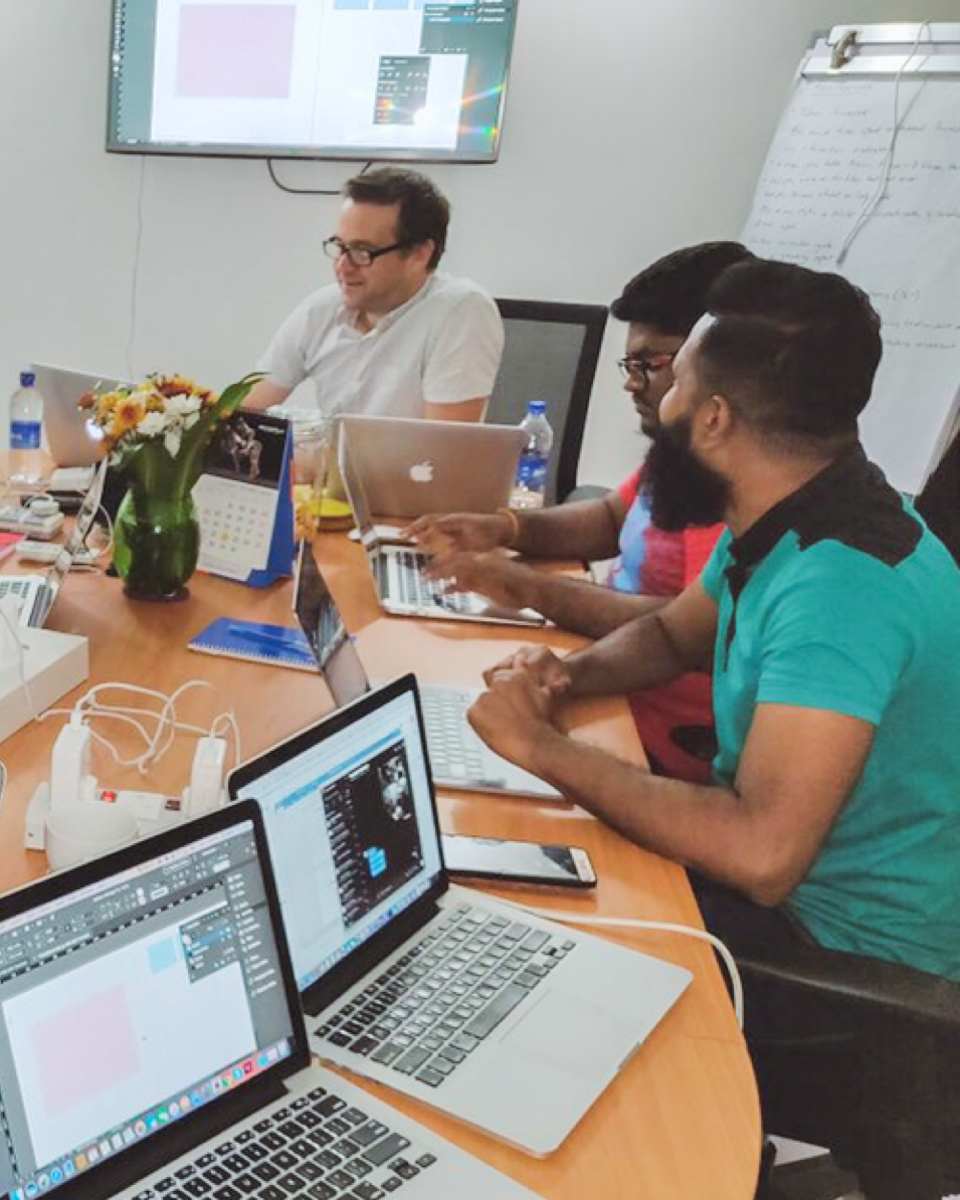
I first used InDesign in 2016 when I joined Typefi. I’d used a bit of Adobe Photoshop, Illustrator and Premiere in the past, but I’d never even heard of InDesign! As a Support Consultant at Typefi, I now mainly use InDesign to create templates and for troubleshooting.
I’ve discovered a few useful tools from using InDesign over the last few years; for example, loading the Paragraph Styles, Table Styles, Cell Styles and Character Styles to keep styles consistent through the document.
Other helpful options are the ability to transfer master pages from another InDesign file, and saving the file in IDML format so that it can be used in different InDesign versions.
My favourite tip is how to format a Typefi Element so that a floating image always appears on a new page:
- Create an Inline Element;
- Create a Paragraph Style;
- Under the Keep Options set Start Paragraph to On Next Page;
- Add the Paragraph Style as an External Paragraph Style to the Inline Element.
Gayanthika Udeshani, Engineer, Sri Lanka
I started using InDesign last year when I was working in the Typefi Designer team. My first challenge was to port Designer and Typefitter plugins to InDesign 2019. I didn’t have any idea about this powerful software and I had to research to find out why people use it.
I always thought people made their life more complicated by using InDesign when they could simply use Microsoft Word. However, I came to know that most of the creative people use this flexible platform to map their ideas to many outputs, and I don’t think we could do that with Microsoft Word.
While I initially used it for testing the Designer and Typefitter tools, I also started learning to create some basic documents such as my curriculum vitae. I am planning to create a plug-in to address a limitation of InDesign.
I love InDesign because designers, developers and presenters can all use it to solve their own challenges. It’s not all about programming or knowing every bit of InDesign software.
Designers can convey a very powerful message to many readers with a creative leaflet they’ve made using InDesign, while on the other hand, developers use their skills to create InDesign plug-ins that make designers’ jobs easier.
The best thing that happened in my career was taking part in CreativePro Week 2019, where all of these subsets of people come together to share their knowledge. Designers can explain the problems they have with designing things, while the developers get ideas for their software pieces.
For example, we can use scripts to automate multiple steps into a single click. Most designers, even though they’re not keen on programming, are so excited to use these scripts because they help make their job easier.
Damian Gibbs, Solutions Consultant, South Africa
InDesign was the fifth page layout program I used; the very first was called Jetsetter. When I started working at a publishing company, I started with Ventura on the then-new and shiny Windows 3.1x, which was released in 1992.
The first design program I used with float panels was Aldus Pagemaker, the precursor to InDesign. I still remember having to use the hyphenation command to rebuild the files to fix any corruptions. I then rolled on to the industry standard at the time, QuarkXpress.
Eventually, five or so years after I started typesetting, InDesign 1 was launched. I jumped at it with both hands. InDesign 1 felt a little sluggish (or maybe it was my computer), but it had a great interface and some nice features that kept me hooked.
I’ve learned the online communities connected to InDesign are a great resource and the people in them are really helpful. The scripting capabilities add another level of sophistication and extensibility which just makes it a very powerful tool.
Since InDesign came out, I have used it extensively for designing and typesetting—mostly books, but also some magazines. Now, I use it to help customers automate publishing production. Seeing how much can be accomplished with scripting and automation is always really interesting and exciting.
My favourite InDesign tip is Command (Ctrl)+Enter. You can reach any menu shortcut. After Cmd+Enter, if you type p: in the quick access search, you can access all Paragraph Styles, c: will give you Character Styles, and o: will give you Object Styles. Using your keyboard is a lot faster than a mouse.
Shanna Bignell, Marketing Manager, Australia
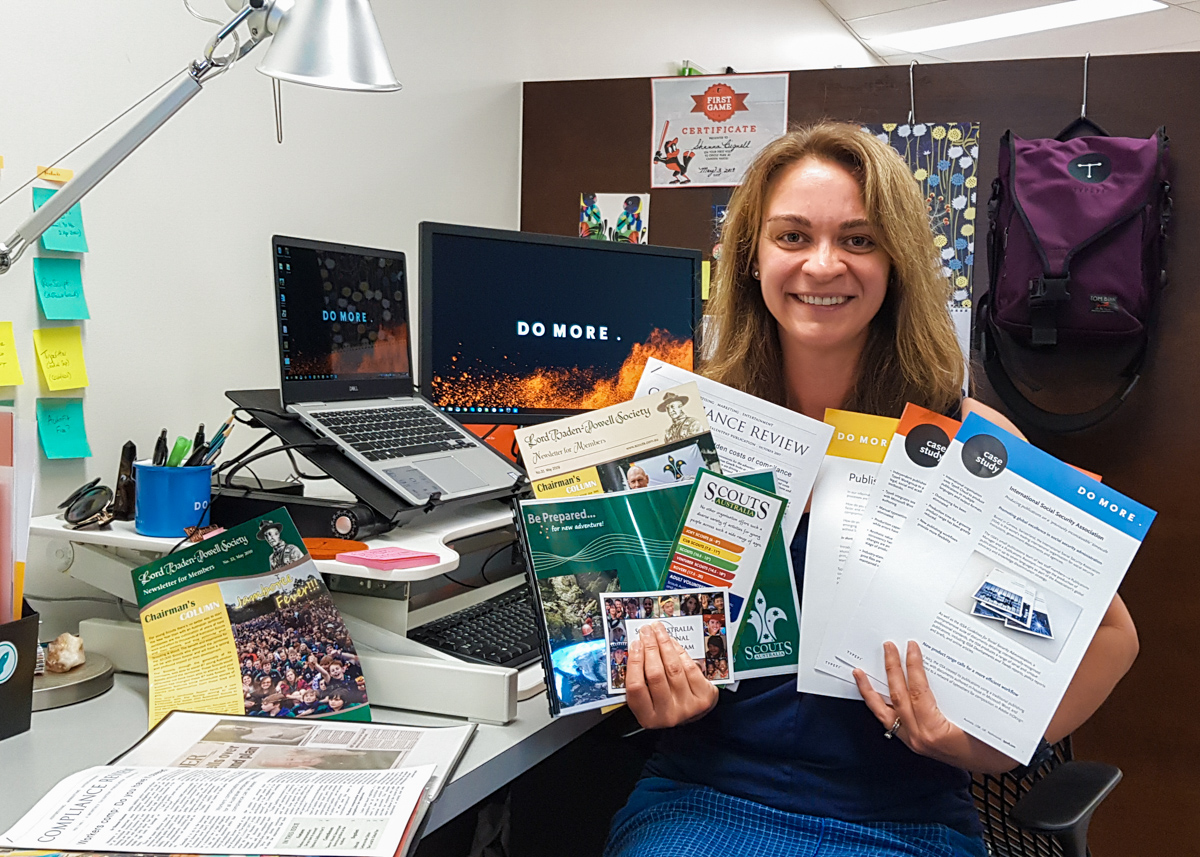
My first experience with page layout was at my very small high school in country Australia. After my final exams in 1997, I learned that none of the teachers were willing to take on responsibility for producing the yearbook, so I volunteered to do it. I put together a 60-page magazine on my own using Microsoft Word, a scanner, and a very dodgy digital camera. It was epic!
When I headed off to university the following year to study journalism, it was a happy revelation to learn that actual page layout software existed. They taught us QuarkXPress—while we had other Adobe products (Photoshop, Premiere), InDesign was released during the second year of my degree, and I guess it was just too new for the university to invest in a bunch of licences.
By the time I hit the workforce in 2001, however, Adobe InDesign had become the “industry standard.” I’ve worked with it ever since, except in one memorable job at a not-for-profit where I had to use Microsoft Publisher and spent a lot of time wishing I had InDesign!
Before I started at Typefi in 2015, I would have described myself as an Intermediate InDesign user. I’d created countless newsletters, posters, brochures, and—my crowning achievement—the Scouts Australia National Brand Manual in 2010. I could even do curves!
But then I arrived in the Typefi office and discovered that InDesign is like an enormous iceberg of functionality and I was only aware of the tiny piece that is visible above the waterline. I kicked myself back down to Beginner status after realising that most of my Typefi colleagues are well beyond Advanced level—somewhere around Expert or Wizard! (I was so naive! It’s true that you don’t know what you don’t know.)
I love seeing how my colleagues constantly come up with new ways to make InDesign and Typefi work for our customers. My favourite tip that I’ve picked up since being at Typefi is the Balance Ragged Lines function—making paragraphs look tidy just gives me the warm fuzzies.
Guy van der Kolk, Senior Solutions Consultant, Netherlands
I actually started using Aldus Pagemaker back in high school during Yearbook class. Then my path in the graphics industry took a turn, and I worked with Illustrator and specialised packaging software for a long time.
When I went back to evening school in 2010, I started using InDesign CS5 for classwork and I loved it.
Now, I use InDesign primarily for building templates for use with Typefi. I get to work with all the cool (and sometimes not so cool) features, without any of the grunt work that is often associated with page layout. Best of both worlds!
Some of the things that I like most are the fine-grained control over so many aspects of laying out a page and the geekery that Nested Styles and GREP Styles represent.
One of my favourite tricks is using Object Styles and Paragraph Styles with the Next Style feature to format plain text and turn it into a callout in just 1 click!
We’re all on the same page!
At Typefi, our team has a long history with InDesign. Many of us have grown with it over the years, and we all use it differently. However, it’s good to know that when it comes to our appreciation of this powerful publishing software, we’re perfectly aligned.
Happy 20th birthday, InDesign—here’s to the next 20!


